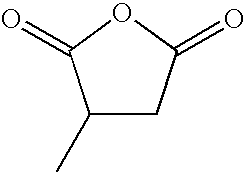Patch and patch preparation
a technology of patch and adhesive layer, applied in the field of patch and patch preparation, can solve the problems of skin irritation, insufficient practical aspect of patch based on conventional acrylic polymers, and reduced cohesive strength of adhesive layer containing a large amount of organic liquid components, so as to achieve good adhesiveness, less residue, and good cohesion
- Summary
- Abstract
- Description
- Claims
- Application Information
AI Technical Summary
Benefits of technology
Problems solved by technology
Method used
Image
Examples
production example 1 (
Patch)
[0077]The starting materials were mixed at the mixing ratio shown in Table 1 to give a solution of a composition for forming an adhesive layer in toluene. The solution was applied to a polyethylene terephthalate (PET) film as a release liner such that the film thickness would be 50 μm, and dried to evaporate toluene, whereby an adhesive layer was formed. To the surface of the adhesive layer was adhered a laminate of PET non-woven fabric and PET film as a support, with the PET non-woven fabric surface on the adhesive layer side. This was aged at 60° C. for 3 days to give the patches of Examples 1-8 and Comparative Examples 1-4.
[0078]The starting materials and abbreviations thereof used in the Examples and Comparative Examples are as follows:
[0079]PIB1: polyisobutylene, viscosity average molecular weight 4,750,000[0080]PIB2: polyisobutylene, viscosity average molecular weight 800,000[0081]PIB3: polyisobutylene, viscosity average molecular weight 560,000[0082]LIR1: non-functional...
experimental example 1
[0091]The patches of Examples 1-8 and Comparative Examples 1-4 were evaluated based on the measurement of the following evaluation items.
(1) General Property
(i) Adhesive Force: Unit: N (Width 12 mm)
[0092]A cleaned phenol resin board was used as a test board in a room at 23° C.×60% RH. An adhesive face of a 12 mm-wide test piece was lightly adhered to the board, and pressure-bonded by one reciprocation of a 2 kg pressure bonding roller on the test piece. The test piece was stood still in the same environment for 30 min, and peeled off by a tensile tester at an angle of 180° and a tensile rate of 300 mm / min. The testing power at that time was determined.
(ii) Cohesive Force: Unit: Min (Area 200 mm2)
[0093]A cleaned phenol resin board was used as a test board in a room at 23° C.×60% RH. An adhesive face of a 10 mm-wide test piece was lightly adhered to the board, and pressure-bonded by one reciprocation of a 2 kg pressure bonding roller on the test piece. The area of pressure bonding was...
production example 2
[0113]In the same manner as in Example except that 1 wt % in 25-30 wt % of polyisobutylene in each Example is changed to a drug (indomethacin), a patch preparation of Examples A-H are produced. The patch preparations of Examples A-H show good practical properties of skin irritation, adhesiveness and adhesive residue, as do the patches of the Examples.
PUM
| Property | Measurement | Unit |
|---|---|---|
| glass transition temperature | aaaaa | aaaaa |
| adhesive | aaaaa | aaaaa |
| or more crosslinkable functional groups | aaaaa | aaaaa |
Abstract
Description
Claims
Application Information
 Login to View More
Login to View More - R&D
- Intellectual Property
- Life Sciences
- Materials
- Tech Scout
- Unparalleled Data Quality
- Higher Quality Content
- 60% Fewer Hallucinations
Browse by: Latest US Patents, China's latest patents, Technical Efficacy Thesaurus, Application Domain, Technology Topic, Popular Technical Reports.
© 2025 PatSnap. All rights reserved.Legal|Privacy policy|Modern Slavery Act Transparency Statement|Sitemap|About US| Contact US: help@patsnap.com

